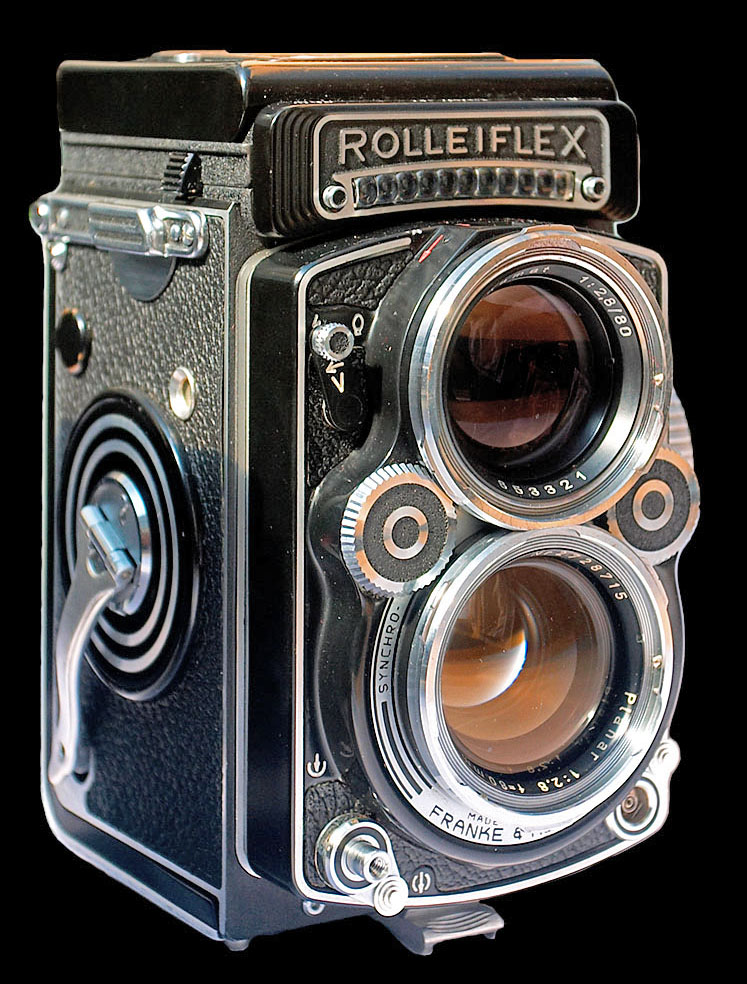

It’s also equipped with an 11-area autofocus system for high-speed and accurate autofocus. If you haven’t used a film camera before, the F6 is a good choice because many of the features are similar to that of a DSLR. Nikon connects old-school with modern through the Nikon F6, which is its flagship film camera.
#Rolleiflex 2.8 poloroid manual
Since it was stripped down to the necessities to save costs, it’s missing features, such as self-time and viewfinder information.Īlthough it doesn’t have some features that other film cameras have, it’s an excellent camera to have and is recommended by many instructors.Īdditionally, it’s a great camera to learn manual focus with. It’s completely mechanical, which means it doesn’t need a battery to run. It has a great reputation and can be used with ease due to its simplistic design. Released in 1976, the Pentax K1000 is one of the most widely-known and used cameras. Pentax K1000 Photo courtesy of WikiMedia Commons. It’s also lightweight, has incredible TTL metering, and is simple to use, as it has three controls. It has a wide and bright screen, which will help you capture excellent photos.

One lens is used to take the photo, and the other is used for the viewfinder system. The Rolleiflex 2.8E is a twin-lens reflex (TLR) camera, which means it has two lenses of the same focal length. Rolleiflex 2.8E Photo courtesy of Amazon. If you’re new to film photography, or would rather spend a couple of hundred dollars instead of thousands, the Minolta X-700 is an excellent choice. So, you’re better off using it during the day. Its only downside is that it doesn’t do well in low-light. The X-700 has a bright viewfinder, which makes it easier to shoot with.

It was the top-of-the-line and last fully manual focus camera by Minolta. The Minolta X-700 is a 35mm single-lens reflex film camera that was released in 1981. It’s the perfect camera for street and travel film photography. The camera is made of metal, which makes it able to withstand extreme conditions. It has a clean, all-black look, is compact, and has a quiet shutter. It’s a 100% mechanical camera, as the battery is only required to operate its internal light meter. The Leica MP is known as the best of the best. Leica is known for its superior quality, incredible photos, and beautiful design. It was a sophisticated camera that had all digital controls. It had a fully automatic program mode, aperture-priority, and shutter speed-priority.Īdditionally, the AE-1 was released a couple of years earlier (Source: Canon), and is more popular.Īlthough the AE-1 is more popular, the A-1 has incredible specifications and abilities. The Canon A-1 was released in April 1978, and it was the top-of-the-line cameras in the A-series. The name was the M-1, however, Leica asked them to change it since Leica cameras begin with an M.ĭue to its lightweight and compact body, the OM-1 is an excellent film camera to take with you on the road. It was originally released in July 1972 as the first product in the OM Series. The Olympus OM-1 is a manually operated 35mm single-lens reflex camera, which has incredible quality and is compact. Taken from some of the greatest shoots of the past decades, this is a book your collection “needs”.1. And yet, the images still exhibit more raw emotion than most will ever produce. Yeah, digital guys will tell you they’re “too soft” or “too grainy”, and white balance is off,…and blah, blah, blah. A glimpse into the mind of one of the most important photographers of the 20th century. But it is definitely a “backstage pass” to a Helmut Newton shoot. Is it a “ SUMO“, (a massive work of art), or even a “A Gun for Hire”? Well, no, not quite. This is an intimate peek into the world of genius. There was a time when Polaroid was the instant film king of the hill. Polaroid, (and now Instax), hold a special place in the hearts of film photographers. Luckily, they were mostly saved by June, who was an awesome business woman and could see a potential payday in what would appear to be mundane. As you can see in the above pic by Roxanne Lowit, he added a Metz “Potato masher” flash. But the Rolleiflex 2.8, Plaubel Makina 67 and, (for Polaroid film), the Mamiya Universal Press with Polaroid back. From an Olympus MJU to his Hasselblad he was mostly associated with. Newton was known through the years to use many cameras. Polaroid 600 SE and Mamiya Universal Press … Image of Helmut Newton by © Roxanne Lowit Certainly Helmut Newton didn’t view them as ‘art’, per se’. Something you did just to test exposure, composition and other technical things. They were actually meant as “throwaways” in the film era. In fact, the book was put together by June Newton, his wife. But it still inspires me for some reason. So, this isn’t an up to the minute news flash for most. “Polaroids”, the book, has been out for years.


 0 kommentar(er)
0 kommentar(er)
